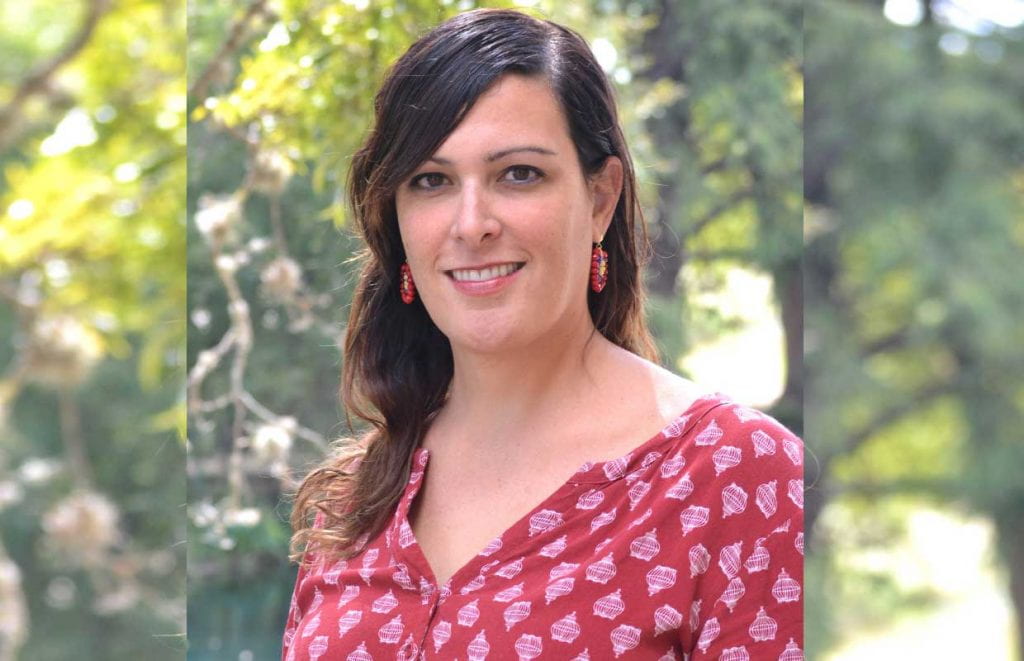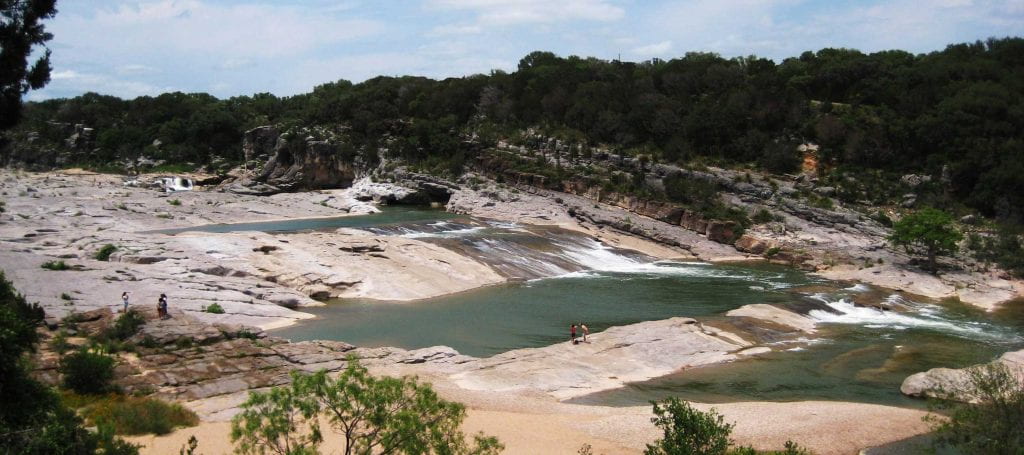Water Program Officer for the Cynthia and George Mitchell Foundation
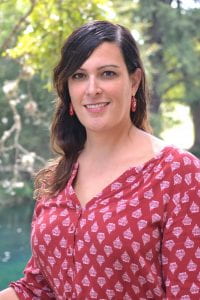 In this issue’s Q&A, Texas+Water Editor-in-Chief, Dr. Todd Votteler, interviews Emily Warren Armitano, Water Program Officer for the Cynthia and George Mitchell Foundation (CGMF). Emily R. Warren Armitano is the water program officer for CGMF in Austin. For more than 20 years, she has been making connections between science and policy that supports natural resource management decisions—engaging communities in caring for their watersheds, land and water conservation strategies, and sustainable use of natural resources in Texas. Prior to joining CGMF, Armitano held leadership positions at The Meadows Center for Water and the Environment, acting as principal manager for the center’s strategy and programs, and the Texas Parks & Wildlife Department, acting as the policy and regulatory coordinator. Armitano has also served as program and management consultant to the United Nations, served on the Hill Country Alliance Board, and served as president of the Colorado River Alliance Board. She has a B.S. in Ecology, Ethology, and Evolution, an M.S. in Environmental Science, and a M.P.A. in natural resource management and environmental policy, and is working on a Ph.D. in Geography.
In this issue’s Q&A, Texas+Water Editor-in-Chief, Dr. Todd Votteler, interviews Emily Warren Armitano, Water Program Officer for the Cynthia and George Mitchell Foundation (CGMF). Emily R. Warren Armitano is the water program officer for CGMF in Austin. For more than 20 years, she has been making connections between science and policy that supports natural resource management decisions—engaging communities in caring for their watersheds, land and water conservation strategies, and sustainable use of natural resources in Texas. Prior to joining CGMF, Armitano held leadership positions at The Meadows Center for Water and the Environment, acting as principal manager for the center’s strategy and programs, and the Texas Parks & Wildlife Department, acting as the policy and regulatory coordinator. Armitano has also served as program and management consultant to the United Nations, served on the Hill Country Alliance Board, and served as president of the Colorado River Alliance Board. She has a B.S. in Ecology, Ethology, and Evolution, an M.S. in Environmental Science, and a M.P.A. in natural resource management and environmental policy, and is working on a Ph.D. in Geography.
For what purpose did Cynthia and George Mitchell establish the foundation and why is water one of the areas that the foundation is focused on?
The Mitchell’s established the foundation in 1978 on the premise of fostering principles exemplified in their values—with a vision of supporting high-impact projects at the nexus of environmental protection, social equity, and economic vibrancy focused primarily in Texas.
When Mr. Mitchell signed the Giving Pledge sponsored by Warren Buffet and Bill and Melinda Gates, they made public their long-held private intent that the majority of their wealth would be donated to philanthropic initiatives. Since 1978, the foundation and the family have distributed or pledged an estimated $500 million in grants. The foundation made significant gifts to the National Academy of Sciences in 1996 and 2001 to study the scientific merit of sustainability, with the goal of launching the field of sustainability science. Our board and staff are committed to carrying out Mr. and Mrs. Mitchell’s philanthropic legacy—supporting the issues and organizations that reflect their values and vision. We utilize a sustainability science approach in our sustainability programs due to its rigorous scientific framework, interdisciplinary approach, and focus on real-world challenges of balancing economic, social, and environmental trade-offs. Clean energy was the foundation’s first sustainability-related program—dedicated to minimizing demand for energy, while meeting demand through the cleanest energy options possible. Water is, arguably, the most important long-term natural resource issue facing the state of Texas. Since projections of water availability in Texas show that we won’t be able to meet our future demands if nothing changes, water is intrinsically tied to a sustainable future. Water was the foundation’s second sustainability program—dedicated to looking at the big questions about water and finding solution-based answers, balancing a rapidly growing population, economy, and demand for energy.
You have worked for over 20 years making connections between science and policy, and engaging with communities in managing their watersheds. How has that prepared you for your new role as the water program officer for the Cynthia and George Mitchell Foundation?
I have had the great fortune of working in Texas for the past 20 years on water and other natural resources challenges facing our state. In that time, I have learned a number of lessons that I feel have prepared me for my new position at the foundation. Texas leads the nation for fastest-growing cities, with half of the country’s top ten metropolitan areas located in the state. In fact, 85 percent of Texans live in urban areas and we rely on the working farms and ranches of rural Texas to protect our water supplies, wildlife, and habitat. For the most part, rural Texans have deep ties to those natural resources and private landowners steward their lands without any compensation expectations for the benefits they provide the state. Meanwhile, people who live in urban centers are more and more disconnected from those lands, from understanding where their water comes from, and the role that rural Texas plays in providing vital resources. If there’s one thing the past couple of decades has taught me, it’s that connecting people to nature is of utmost importance for our future sustainability. We also live in a state of water inequities. Some communities have access to clean, reliable drinking water while others do not. Some communities, especially in the west and south, experience drought much more intensely than others. And some communities experience floods, particularly on the coast and in Central Texas, more violently than the rest of the state. At a local level, groups of people—especially those from lower socio-economic backgrounds or people of color—feel the effects of climate change through water more powerfully than others in their communities. People in leadership positions have the best intentions to represent their community’s interests and needs. But too many voices get left out and have never had a seat at the decision-making table. If we want to use our water resources sustainably and be resilient in the face of climate change, those voices must be heard. To quote Earthea Nance, “the future of water is equity.” I cannot underscore the value of building relationships and trust enough. Because of the bottom-up approach to water management, even the most brilliant solutions won’t be implemented without willing participants, partnerships, or communities. As a practitioner, I have seen the important role philanthropy can play in finding those brilliant solutions and building trust. Philanthropy can take risks on identifying and testing out big ideas, where government or private industry can’t. Philanthropy can also catalyze new initiatives or amplify existing ones. Lastly, my years working in water have always reminded me that I am not an expert, that there are amazing people doing great work in water today, and that there is much yet to be discovered.
What are the Cynthia and George Mitchell Foundation’s goals for water in Texas?
The foundation envisions a future with ample and healthy waters above and below ground that sustain rich, diverse ecosystems while minimizing effects of infrastructure on water quantity and quality throughout Texas and the Gulf of Mexico. Consistent with the sustainability science approach that characterizes the foundation’s grant-making, the Water Program aims to increase the scientific understanding of water issues in Texas, which in turn inform the design of effective policy and management approaches to meet environmental water needs. The Water Program’s five major goals are to:
- advance watershed scale co-management of surface and groundwater;
- design and promote integrated water management models;
- accelerate and expand environmental flows work;
- bolster and connect water quality work; and
- explore net positive water development and delivery as a new model.
What are some the key efforts that the foundation is supporting to achieve the goals discussed above?
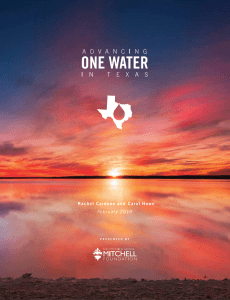 The fundamental focus for support in 2019 has been an investment in statewide water organizations that work on a wide range of water issues including water policy, science, groundwater, communications, urban water, and open water data. In addition, CGMF is supportive of recommendations from the “Advancing One Water in Texas” report that the foundation released in spring 2018. To that end, we recently hosted the U.S. Water Alliance’s One Water Summit that took place in Austin this September. In terms of water quality, we are taking an economic lens to investigate the social costs of water pollution in Texas. Lastly, we are supporting water advocacy efforts that span topics from exploring policies for green infrastructure and integrated water resources management to targeted community engagement in San Antonio and along the Gulf Coast.
The fundamental focus for support in 2019 has been an investment in statewide water organizations that work on a wide range of water issues including water policy, science, groundwater, communications, urban water, and open water data. In addition, CGMF is supportive of recommendations from the “Advancing One Water in Texas” report that the foundation released in spring 2018. To that end, we recently hosted the U.S. Water Alliance’s One Water Summit that took place in Austin this September. In terms of water quality, we are taking an economic lens to investigate the social costs of water pollution in Texas. Lastly, we are supporting water advocacy efforts that span topics from exploring policies for green infrastructure and integrated water resources management to targeted community engagement in San Antonio and along the Gulf Coast.
Are there any geographic areas of Texas that are of special interest to the foundation?
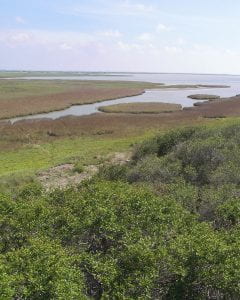
CGMF’s Sustainability Programs take a systems view to finding a sustainable future in the face of climate change and population growth. As such, the foundation looks at sustainability challenges holistically—through all of its programs. There are currently two key geographies where CGMF is focusing: the San Antonio Bay Watershed and the greater Big Bend region of far West Texas. Although initially focused on the San Antonio Bay Watershed, the foundation’s Headwaters to Tidewaters initiative is working towards sustainable, coordinated management of surface water, groundwater, and land at the watershed scale to ensure ample, clean water that supports a thriving economy, healthy communities and rich, diverse ecosystems throughout Texas and the Gulf of Mexico. In far West Texas, energy development continues to accelerate. All forms of energy—oil, gas, wind, and solar—are central to the Texas economy. But the greater Big Bend region is much more than a source of energy resources. Everyone who has a stake in the area’s future deserves input into how energy development is balanced with both community priorities and protection of natural resources. We’re listening to community residents and landowners to help minimize impact to our water, land, and air in order to conserve a unique Texas treasure.
Does the Cynthia and George Mitchell Foundation work with other philanthropic organizations to address water issues, and if so what are some examples?
Absolutely. Whenever possible, we work closely with other philanthropies and non-profit organizations that work on clean energy, sustainability, water, land, and the environment. For example, over the past several years, our Water Program has been actively participating in the Water Funder Initiative, which is a collaborative of funders dedicated to identifying and activating promising solutions in the western United States, where water scarcity and reliability of clean water are urgent issues.

